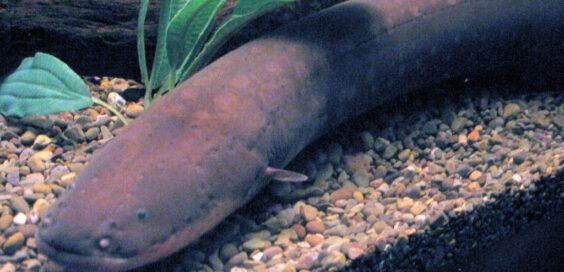
Creature Feature – Shocking Facts about Electric Fish
Posted by Dustin Horton // November 13, 2022 // Articles, Creature Feature
Nearly 350 species of fish are ‘electrogenic’, meaning they can generate their own electricity using specialized electrical organs. To counteract the poor visibility of the murky waters they inhabit, most electrogenic fish use electric signals to communicate, navigate their surroundings and locate prey. Only a few species employ electricity to immobilize prey.
Scientists place electric fish into two groups based on how much electricity they can produce. The first group is called “weakly electric fish.” Species in this group, like the black ghost knifefish, produce about 1 volt of electricity (around two-thirds that of an AA battery), which is not powerful enough to attack prey. Instead, they employ electric fields and specialized electroreceptor cells to detect signals from other fish, judge distances, and interpret shapes/sizes of nearby objects.
The second group, called “strongly electric fish,” also emit electric fields to interpret their environment, but reserve their strongest surges for hunting. The most powerfully charged member of this group is the electric knifefish, a.k.a. the electric eel, which can discharge a series of pulses containing as much as 600 volts of electricity! The electric catfish and electric ray are two other super-charged fish in this group.
Electrogenicity begins when the brain sends a signal through the nervous system to the fish’s electric organ, which is filled with stacks of specialized cells called electrocytes. At rest, these cells are in a neutral state, pumping out certain ions to maintain a positive charge outside the cell and a negative charge inside. When the nervous system signal reaches the cells, their ion gates open, allowing positive-charged ions to rush back in. This leaves one face of the cell negatively charged outside and positively charged inside, while the far side of the cell has the opposite charge pattern. The alternating charges produce a current, transforming each electrocyte into a biological battery that fires simultaneously!
Article by Margie Manthey
Photo from Wikimedia.org












